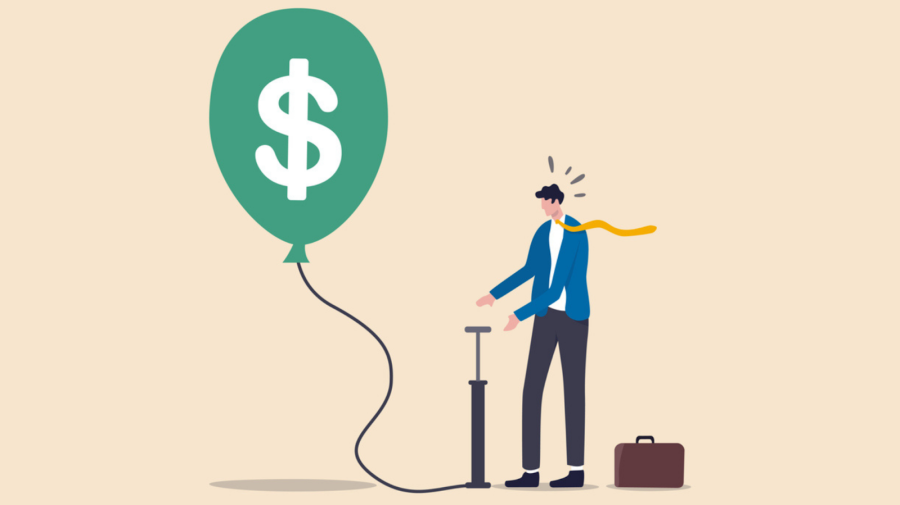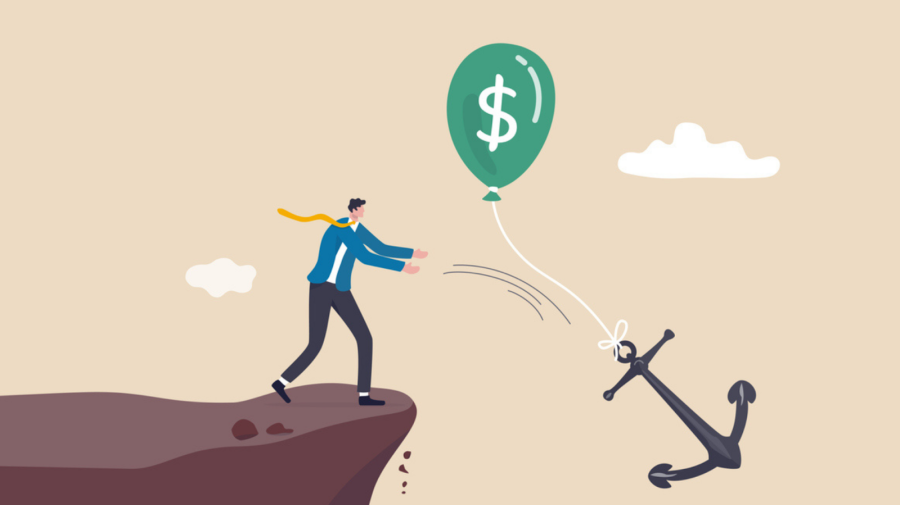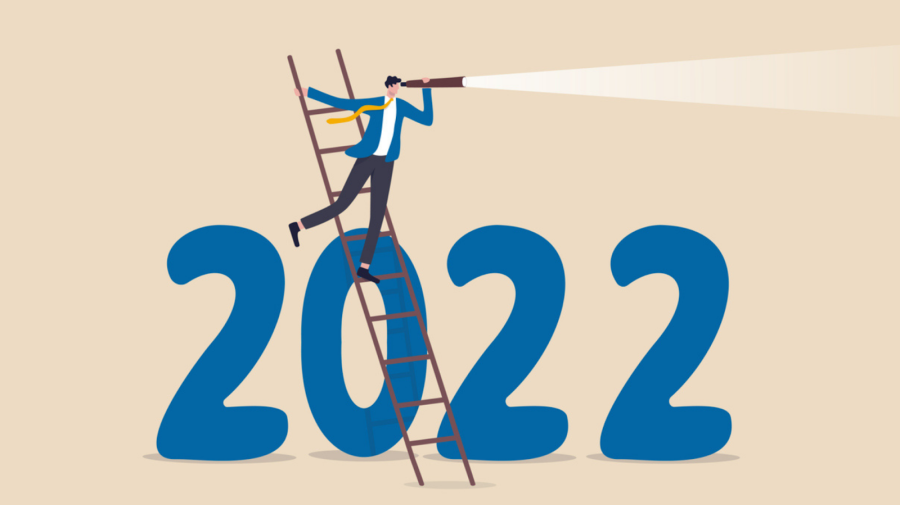
In recent months, “inflation” has been all over the news. In March 2022, the inflation rate hit a 40+-year high, coming in at 8.5 percent. With figures like that, it’s no surprise that economists and consumers are concerned. However, while most people believe that getting inflation under control is vital, economists also assert that deflation comes with risks.
Essentially, if an overcorrection led to deflation instead, the economy wouldn’t end up in any better shape. Considering that “inflation” and “deflation” sound like opposite terms, it may seem odd that both are generally viewed negatively. Here, we’ll dig into inflation vs. deflation — from the terms’ meanings to the economic trends they signal, so that you have a better grasp of what’s on the horizon in 2022.
Inflation vs. Deflation, Explained
What Is Inflation?
Inflation is an economic situation marked by rising prices and a loss of currency value. Essentially, costs rise while the buying power of the dollar (or the fiat currency associated with the nation experiencing the phenomenon) falls. The inflation rate is a percentage and a number above zero. It outlines how much prices have increased over a particular period, typically year-over-year.

You can expect some degree of inflation, as it reflects a growing and changing economy. While it may inherently seem harmful, that isn’t the case if other economic factors balance out the broader situation. For example, if wages rise to ensure households have sufficient buying power, inflation isn’t necessarily problematic.
One way to see how another factor reduces the impact of inflation is gas prices vs. wages. In 1982, the average price of one gallon of gas was $1.31, and the median annual household income was $23,430. As of May 4, 2022, the average price for gas was about $4.23, while the median household income was estimated at $74,099 (as of January 2022).
However, rapid inflation — also referred to as hyperinflation — typically doesn’t occur alongside balancing elements, such as wage increases. As a result, households commonly have to alter their spending habits, forgoing niceties to ensure essentials fit into the budget.
For lower-income households — a population segment that commits far more of their budget to essentials in the first place — there may not be enough room to make adjustments. As a result, they may have little choice but to go without.
What Is Deflation?
Deflation is an economic situation marked by declining prices and an increase in currency value. Essentially, costs fall while buying power rises. Moreover, the deflation rate is a percentage with a number below zero. It outlines how much prices fell during a particular period, usually year-over-year.

Along with being a broader economic situation, deflation also occurs on a smaller scale when a company reduces prices on a product in response to low demand. For instance, if a smartphone isn’t selling at $1,000, the company may lower the price to $750. If customers still don’t buy (or choose to wait, assuming that the company might reduce the price further), the price may fall to $500. In this case, the customer’s money is worth twice what it once was in this example, hence why it’s an example of deflation.
In many cases, deflation sounds positive; lower prices and rising buying power make it easier for consumers to handle their needs and fund their wants. However, it can spur less desirable economic situations, too. Consumers may stop spending under the assumption that prices will continue to fall. The low prices also strain manufacturers and service providers, causing employee wages to stagnate — or even fall. If deflation leads to a cycle of price cuts and wage reductions, it creates a deflationary spiral.
Inflation vs. Deflation: A Look at the Causes
Inflation and deflation are both complex economic scenarios brought about by a range of factors. Primarily, they’re considered expressions of simple supply-and-demand principles.
When demand goes up but the supply remains steady or falls, or demand stays constant or rises but the supply declines, you can end up with inflation. If demand falls, but the supply remains steady or rises, or the supply increases while demand remains constant or falls, you get deflation.
Inflation vs. Deflation: Why Do Both Terms Often Have Negative Connotations?
Both inflation and deflation have negative connotations because they are potentially harmful to the broader economy and its long-term growth. Rising prices are typically viewed negatively, especially if wages don’t keep pace. While falling prices may seem positive, they can actually lead to reduced consumer spending and stagnant or declining wages.
However, mild-to-moderate inflation, coupled with rising salaries, can actually be signs of a growth period. Similarly, mild deflation over a short period can correct inflation imbalances and spur additional spending, but only when it’s metered and targets the proper economic segments.
Ultimately, some semblance of balance can make inflation and deflation both potential positives. However, when inflation or deflation hit high or extreme levels, they typically cause far more harm than good.

How Inflation and Deflation Factor Into Today’s Economic Landscape
Currently, inflation is our primary concern in the United States. During the so-called height of the COVID-19 pandemic, supply chain challenges and fears about the availability of goods created a tumultuous situation, reducing supply while increasing demand.
As time wore on, other factors came into play. For example, the Great Resignation created staffing issues at some companies, leading to reduced production. This further exacerbated those supply-chain issues, leading to more inflation in some cases.
All in all, inflation is rearing its, at times, ugly head in 2022. How long will it last? It isn’t entirely clear. However, if it remains high, hyperinflation may be on the horizon for us, and that would create a challenging situation — one that has the potential to bust the budgets and alter the lives of many Americans, potentially for years to come.






